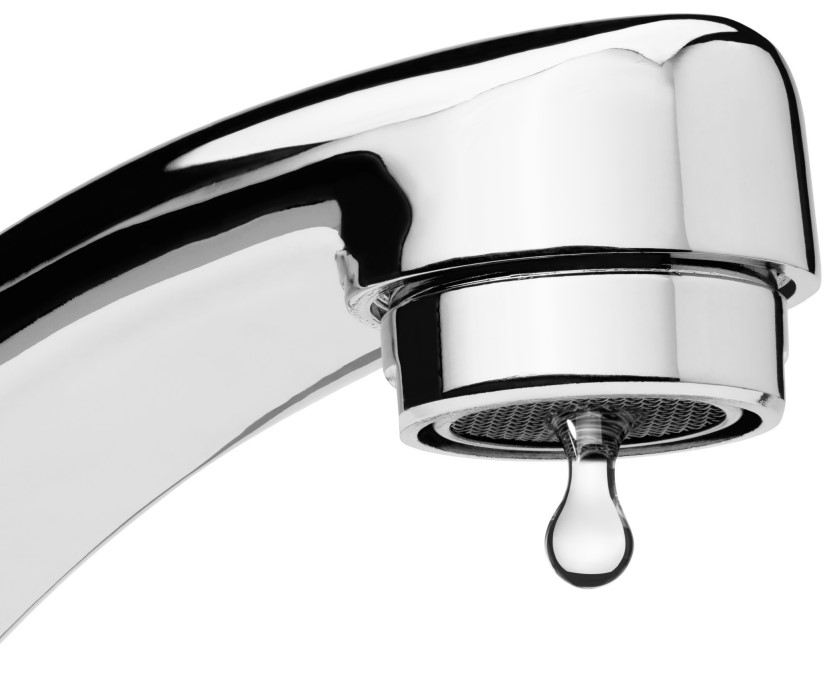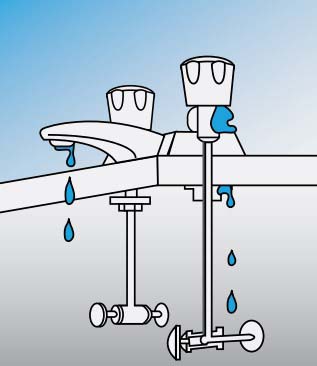Leak Alerts: Find and Fix Leaks

Leaks are common and can happen to anyone at any time. Many leaks can be easily repaired by customers, but they often go unnoticed. The Environmental Protection Agency estimates that the average household's leaks can waste nearly 10,000 gallons of water every year. They also estimate 10% of homes have leaks that waste 90 gallons or more per day.
The SFPUC’s Leak Alert Program helps our customers find and fix leaks faster. While we provide tools and resources as a courtesy to help, it is your responsibility to find and fix leaks on your property.
Where to start:
- Register for My Account to track your water usage data
- Use our self-help tools below to find and fix your leak
- If you need help, schedule your Water Wise Evaluation, email waterconservation@sfwater.org, or call 415-551-4730.
-
My Account: Tracking Water Use Data
You can check if your water usage data or if your constant usage is ongoing by registering for My Account. This will allow you to view your daily and hourly water usage, identify unusual spikes in water use, or check if your leak has stopped after a repair. Other useful features include:
- Updating your contact information with your cell phone or email to get notified of possible leaks faster.
- Viewing your daily and hourly water use: most San Francisco residents use about 40 gallons of water per person per day. See how your home compares to the average.
- Find leaks: from the “My Water Use” menu, view “My Daily Use” and “My Hourly Use” charts. Select a recent date when no one was at home. If you see water use on that date, you may have a leak. Or, you may have accidentally left an irrigation system on.
- View water usage from irrigation. If you have an automatic irrigation system, you can check your daily water use chart. Here, you can compare how much water is used on watering days to non-watering days.
You will need your water bill account number to register. If you don't know your water account number, contact our Customer Service Bureau at customerservice@sfwater.org or (415) 551-3000 for assistance.
-
Toilet Leaks

Toilets leaks are the most common household leaks. In many cases, a toilet leak is silent. A leaking toilet can waste up to 3,000 gallons of water in just a few days. Below are the most common leaks associated with a toilet.
- Loose Handle: If the handle feels loose, the nut inside the tank may be loose. Remove the toilet lid and tighten the nut so that the flush handle is tight but moves freely when used. Make sure that the flapper does not get stuck open when the toilet is flushed.
- Leaking Fill Valve: Remove the toilet lid from the tank and mark the water level with a pencil. Flush the toilet. When the tank refills, the water level should return to the marked line. If the tank’s water level fills above or below the marked line, adjust the water level in the tank so that the water shuts off 1-inch below the overflow tube.
- Leaking Flapper: Drop a dye tablet or several drops of food coloring into the tank and wait 15 minutes. If colored water appears in the bowl, the toilet’s flapper is leaking. Disconnect the old rubber flapper and install a new one. Flappers do not last forever so make sure to check for deterioration over time.
- Running Toilet: Do you jiggle the handle to keep the toilet from running? If so, the flush lever and chain, or the handle itself, may be sticking. Adjust the nut that secures the flush lever in the toilet tank. If that does not work, the handle may have to be replaced.
Tip: SFPUC provides free toilet dye tabs, flappers, and fill valves when you schedule a Water-Wise Evaluation.
-
Faucet Leaks

Faucet leaks commonly occur from worn parts or from loose water supply connections. A faucet that leaks one drip per second can waste more than 3,000 gallons per year. Leaks may be obvious, such as a persistent drip, or more hidden, like a leak under the sink. Provide regular maintenance, such as:
- Tightening the water supply tubing at the fittings. Make sure the fittings are secured tightly at the wall and faucet. If this does not prevent more leaking, the water supply tubing may need to be replaced.
- Removing the aerator and soaking it in vinegar to remove mineral buildup; recommended once a year.
Tip: SFPUC provides free aerators when you schedule a Water-Wise Evaluation
-
Shower Leaks
Shower leaks commonly occur where the showerhead attaches to the shower pipe. This type of leak may cause water to drip or spray from the back of the showerhead. Here are some simple ways to keep your showerhead from leaking, while delivering maximum performance:
- Remove the showerhead and soak it in vinegar to remove mineral buildup about once a year.
- Replace the washer or “O” ring inside the showerhead to create a tighter connection.
- Apply Teflon tape or plumbers’ putty to the thread of the shower pipe stem before reinstalling the showerhead to prevent leaks.
Tip: SFPUC provides free showerheads when you schedule a Water-Wise Evaluation.
-
Irrigation System Leaks
Broken or missing sprinkler heads, leaking valves, and cracked distribution lines contribute to excess runoff, deteriorate the health of your landscape, and can even double your water bill! Common Irrigation System Leaks include:
-
Broken Irrigation Pipes: A cracked or broken irrigation lateral or pipe can run constantly and waste thousands of gallons of water a day. Inspect the area between your water meter and irrigation valves looking for wet or muddy areas. These areas may indicate an underground pipe leak.
- Leaking Irrigation Valves: Over time, irrigation solenoid valves can deteriorate and fail to seal properly. This allows constant water flow through your irrigation system. Check to see if valves are functioning properly by activating each of them. Then, visually inspect the valves and see if they open and close correctly.
- Malfunctioning Backflow Device: Contact a backflow device professional to inspect your system's backflow device to ensure it is operating correctly.
Tip: SFPUC provides smart irrigation timer rebates. Large, irrigated landscapes over one half-acre may be eligible for detailed technical evaluations and grant funds for water-saving irrigation and landscape retrofits.
-
-
Other Leaks
Leaks from ponds, pools, hot tubs, fountains, clothes washers, dish washers, ice machines and water heaters can waste hundreds of gallons per day. Check these potential leak sources on a regular basis to ensure they are operating efficiently and not wasting water.
Leaks may also occur in pipes that are either behind walls or underground. These leaks may require a plumber to repair.
-
View or Download Our Handbook for Leaks at Home
-
Frequently Asked Questions (FAQ) on Leaks

